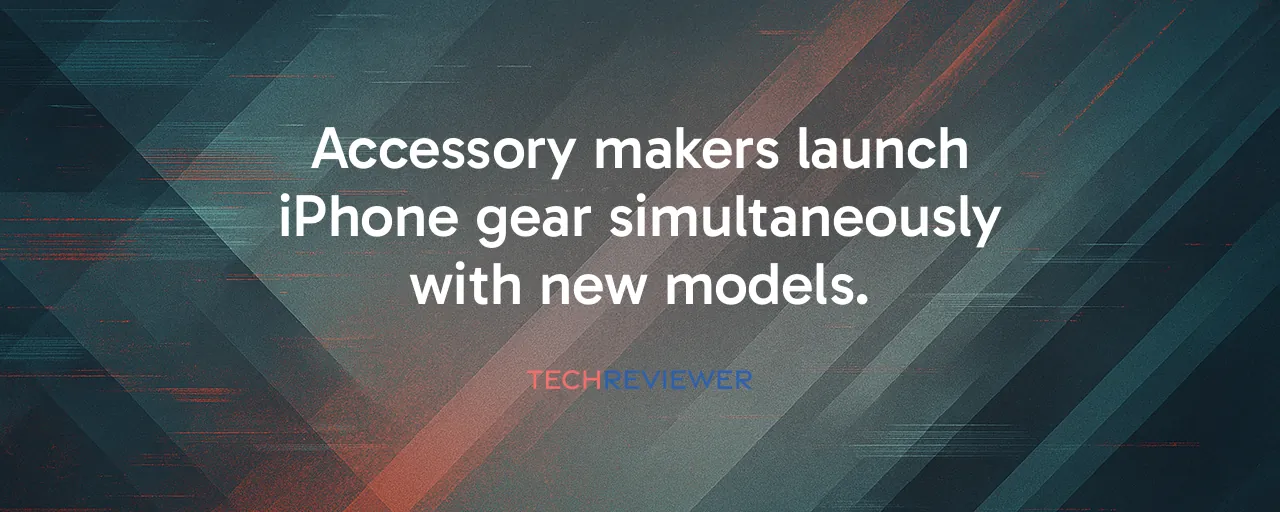Syncing With Apple's Rhythm
Every September, Apple unveils its latest iPhone, and like clockwork, accessory makers like Belkin roll out gear tailored to the new device. The iPhone 17 series, launched on September 9, 2025, brought slimmer designs, beefier chips, and tougher screens. Belkin launched its lineup of cases, chargers, and screen protectors on October 14, 2025, over three weeks after the iPhone 17 became available. This delayed release highlights the challenges accessory makers face in aligning with Apple's launch schedule, despite efforts to anticipate design changes.
This year's iPhone 17, with its A19 chip and Ceramic Shield 2, demands accessories that can handle new dimensions and tech. Belkin's SheerForce cases, for instance, protect against drops from 13 feet and are perfect for the sleek iPhone 17 Air's ultra-thin frame. Meanwhile, their UltraCharge Qi2 wireless chargers, certified in July 2025, deliver a 50% charge in just 30 minutes. This precision reflects a broader trend: accessory makers are no longer just add-ons; they are integral to how users interact with their devices.
Tougher Cases, Greener Materials
Protective cases have come a long way since the iPhone's glass-heavy designs in 2010 made them a must-have. Today, companies like Belkin and ZAGG are pushing boundaries with materials that balance durability and sustainability. Belkin's SheerForce Clear Series uses 74% recycled plastic, proving you can save your phone from a 13-foot tumble while cutting down on waste. ZAGG's Crystal Palace line takes it further, weaving in graphene, a material 200 times stronger than steel, to create cases that are both tough and eco-conscious.
Consumers are driving this shift. Surveys show 72% of buyers weigh environmental factors when choosing accessories, favoring brands that prioritize recycled content or biodegradable options. Pela Case, a smaller player, carved out a niche with compostable flax-based cases, showing even startups can compete by leaning into sustainability. Regulatory pressure, like the EU's February 2025 packaging rules, also pushes manufacturers to rethink materials, ensuring cases don't just protect phones but also the planet.
Charging Up With Speed and Smarts
Wireless charging used to feel like a gimmick, plagued by slow speeds and fussy alignment. Apple's MagSafe in 2020 changed that, and the Wireless Power Consortium's Qi2 25W standard in 2025 has taken it to another level. Belkin's UltraCharge lineup, among the first to earn Qi2 certification, powers up iPhones, Apple Watches, and AirPods simultaneously with magnetic precision. The 50% charge in 30 minutes is impressive, and the convenience lets users ditch tangled cables for sleek, multi-device charging pads.
The charging market is booming, with a projected $215.5 billion global accessory market by 2035. Apple's ecosystem, with 2.4 billion active devices, fuels this growth, as users snap up chargers for home, work, and travel. But it's not all smooth sailing. Manufacturers face tight certification timelines and the risk of inventory pileup if Apple's design shifts, such as the USB-C mandate in 2023, catch them off guard. Still, brands like Anker and Belkin thrive by betting on universal standards like Qi2, which even Android makers are starting to adopt.
The Challenges of Keeping Up
For accessory makers, aligning with Apple's launches is a logistical tightrope. Apple's Made for iPhone (MFi) program sets strict standards, with only 2% of applicants passing its rigorous tests. This ensures compatibility but forces companies to scramble without early access to specs. Belkin's day-one iPhone 17 accessory launch shows their knack for predictive planning, but smaller brands often struggle, risking lost sales if they miss the critical six-to-eight-week window after a new iPhone drops.
Material innovation adds another layer of complexity. While recycled plastics and biodegradable options are in demand, they're tougher to produce at scale without sacrificing strength or clarity. Regulatory shifts, like Oregon's July 2025 recycling laws, add compliance costs, pushing manufacturers to rethink supply chains. These hurdles spark creativity, as seen in OtterBox's modular uniVERSE system, which caters to businesses with barcode scanners and payment terminals, proving accessories can go beyond consumer basics.
What's Next for iPhone Accessories
The future of iPhone accessories is brimming with possibilities. AI is creeping in, with products like Belkin's Stage PowerGrip combining battery packs with camera controls for smarter photography. Modular designs, like OtterBox's enterprise-focused systems, hint at customizable accessories that adapt to user needs. Even augmented reality gear for Apple Vision Pro could spawn new categories, from AR lenses to specialized mounts.
Sustainability will keep shaping the market, with 72% of consumers prioritizing eco-friendly options. Manufacturers are exploring self-healing polymers that fix scratches and biodegradable electronics for fully compostable gear. Meanwhile, subscription models for regular case refreshes are gaining traction, offering users fresh designs while giving brands steady revenue. As Apple's ecosystem grows, accessory makers will keep finding ways to enhance devices, proving that the smallest add-ons can make the biggest difference.
